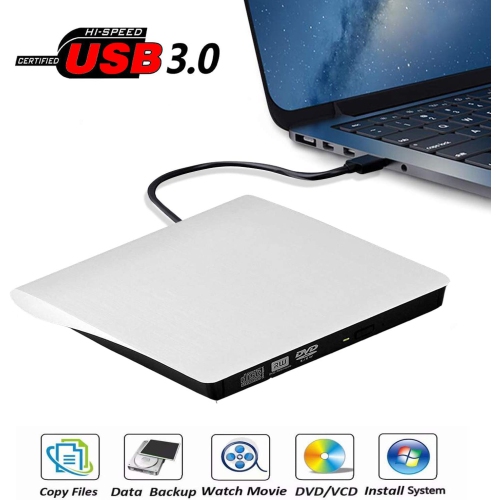- The compact and lightweight Apple USB Super Drive is connected to your MacBook Pro, MacBook Air or Mac mini with Retina display via a dedicated USB cable, and can be easily carried in a travel bag. It can be used to install software, play DVD, VCD, CD, and can burn VCD, CD, music, video, documents.
- Make Offer - MicroMat TechTool Pro 3.0.1 for Macintosh Mac Apple Repair Troublshoot CD 2000 Official APPLE Mac OS X Snow Leopard Operating System Software Version 10.6.3 $49.99.
- For those of us who grew up during the compact disc’s hay day, this is a fantastic app. It does more than look like a CD player. It acts like a CD player. You can especially tell this because, like a CD player from the 80’s or 90’s, it actually has dedicated buttons for rewind and fast forward, separate from those used to change the tracks.

SSD Storage Make quicker work of everything. The 13-inch MacBook Pro includes a solid-state drive that’s blazing fast, with sequential read speeds up to 3.0GB/s. 10 The standard configurations have twice the capacity of the previous generation (256GB, 512GB, or 1TB), and with up to 4TB of storage, you can take all your photos and videos with you no matter where you go.

16-inch model
The ultimate pro.
Starting at $2399
New13-inch model
Power to go.
Starting at $1299
13.3-inch
Up to 4-core Intel Core i7
Up to 32GB
Up to 4TB
Intel Iris Plus Graphics
Up to AMD Radeon Pro 5600M with 8GB of HBM2 memory


Up to 10 hours
Backlit Magic Keyboard, Touch Bar, Touch ID, and Force Touch trackpad
Backlit Magic Keyboard, Touch Bar, Touch ID, and Force Touch trackpad
Apple Trade In
Get up to $1760 for your current computer.*
Apple Mac Refurbished
Just trade in your eligible computer. It’s good for you and the planet.
Free delivery
Apple Macbook Cd Eject
And free returns. See checkout for delivery dates.
Find the card for you
Get 3% Daily Cash with Apple Card or get special financing.
To use any of these key combinations, press and hold the keys immediately after pressing the power button to turn on your Mac, or after your Mac begins to restart. Keep holding until the described behavior occurs.
- Command (⌘)-R: Start up from the built-in macOS Recovery system. Or use Option-Command-R or Shift-Option-Command-R to start up from macOS Recovery over the Internet. macOS Recovery installs different versions of macOS, depending on the key combination you use while starting up. If your Mac is using a firmware password, you're prompted to enter the password.
- Option (⌥) or Alt: Start up to Startup Manager, which allows you to choose other available startup disks or volumes. If your Mac is using a firmware password, you're prompted to enter the password.
- Option-Command-P-R:Reset NVRAM or PRAM. If your Mac is using a firmware password, it ignores this key combination or starts up from macOS Recovery.
- Shift (⇧): Start up in safe mode. Disabled when using a firmware password.
- D: Start up to the Apple Diagnostics utility. Or use Option-Dto start up to this utility over the Internet. Disabled when using a firmware password.
- N: Start up from a NetBoot server, if your Mac supports network startup volumes. To use the default boot image on the server, hold down Option-N instead. Disabled when using a firmware password.
- Command-S: Start up in single-user mode. Disabled in macOS Mojave or later, or when using a firmware password.
- T: Start up in target disk mode. Disabled when using a firmware password.
- Command-V: Start up in verbose mode. Disabled when using a firmware password.
- Eject (⏏) or F12 or mouse button or trackpad button: Eject removable media, such as an optical disc. Disabled when using a firmware password.
If a key combination doesn't work
If a key combination doesn't work at startup, one of these these solutions might help:
- Be sure to press and hold all keys in the combination together, not one at a time.
- Shut down your Mac. Then press the power button to turn on your Mac. Then press and hold the keys as your Mac starts up.
- Wait a few seconds before pressing the keys, to give your Mac more time to recognize the keyboard as it starts up. Some keyboards have a light that flashes briefly at startup, indicating that the keyboard is recognized and ready for use.
- If you're using a wireless keyboard, plug it into your Mac, if possible. Or use your built-in keyboard or a wired keyboard. If you're using a keyboard made for a PC, such as a keyboard with a Windows logo, try a keyboard made for Mac.
- If you're using Boot Camp to start up from Microsoft Windows, set Startup Disk preferences to start up from macOS instead. Then shut down or restart and try again.
Remember that some key combinations are disabled when your Mac is using a firmware password.
Learn more
Apple Mac Charger

Best Apple Mac To Buy
- Learn what to do if your Mac doesn't turn on.
- Learn about Mac keyboard shortcuts that you can use after your Mac has started up.
